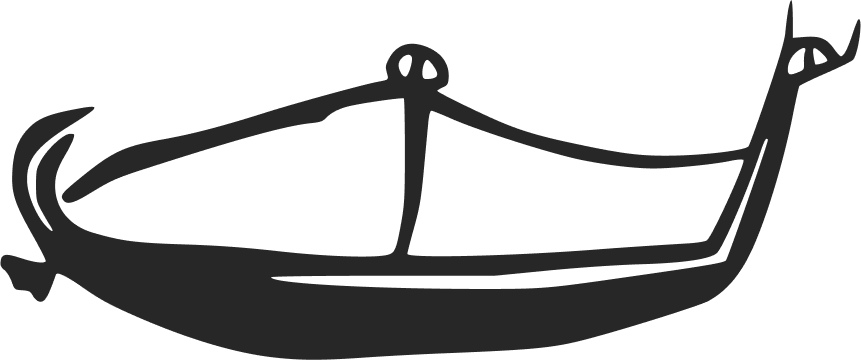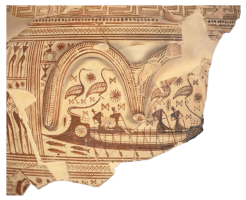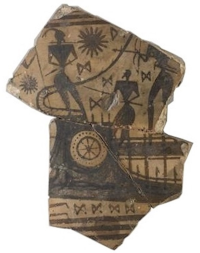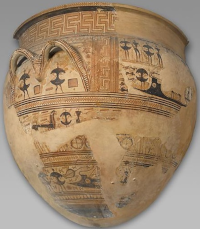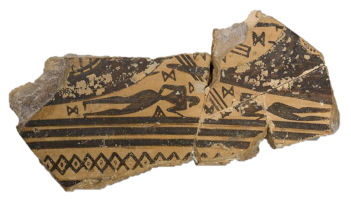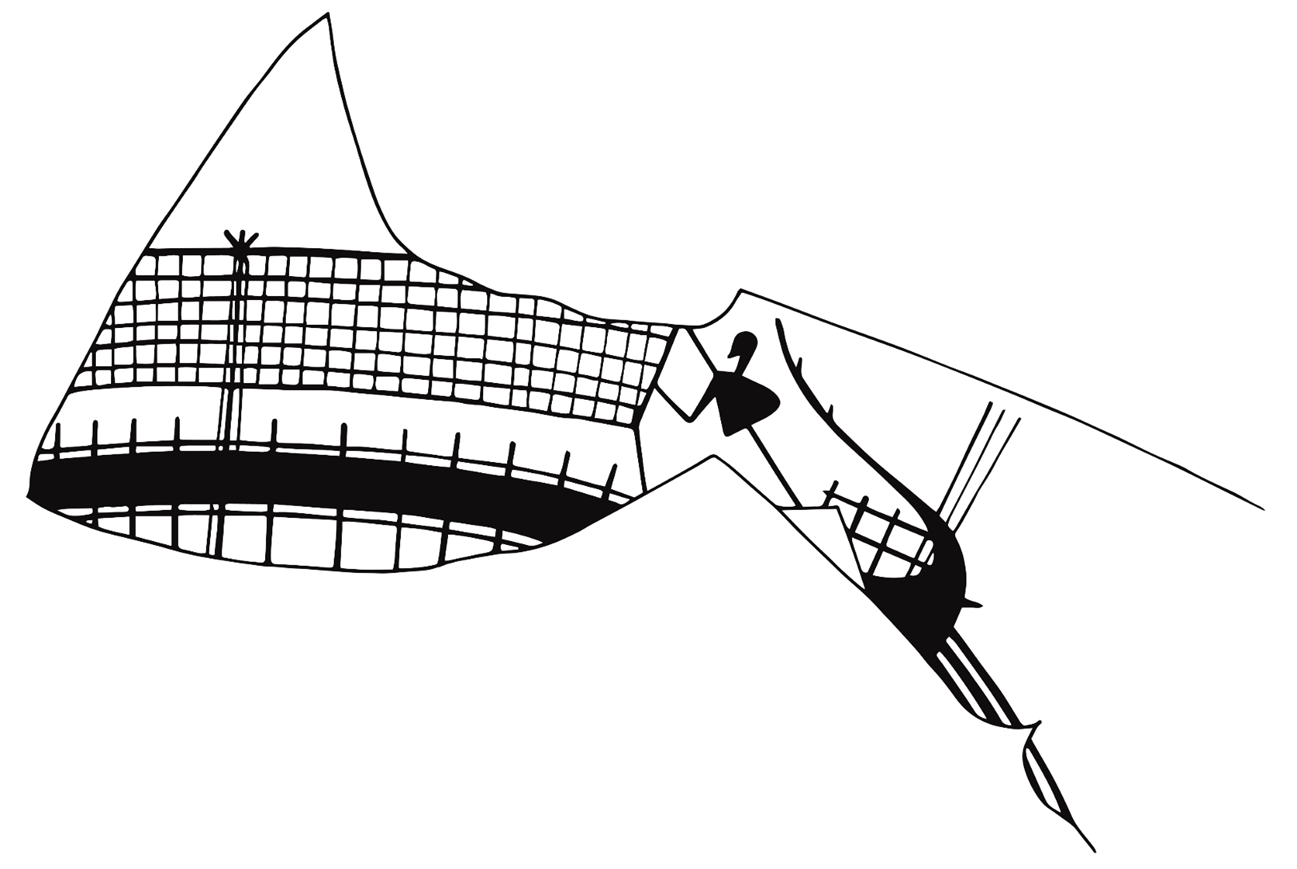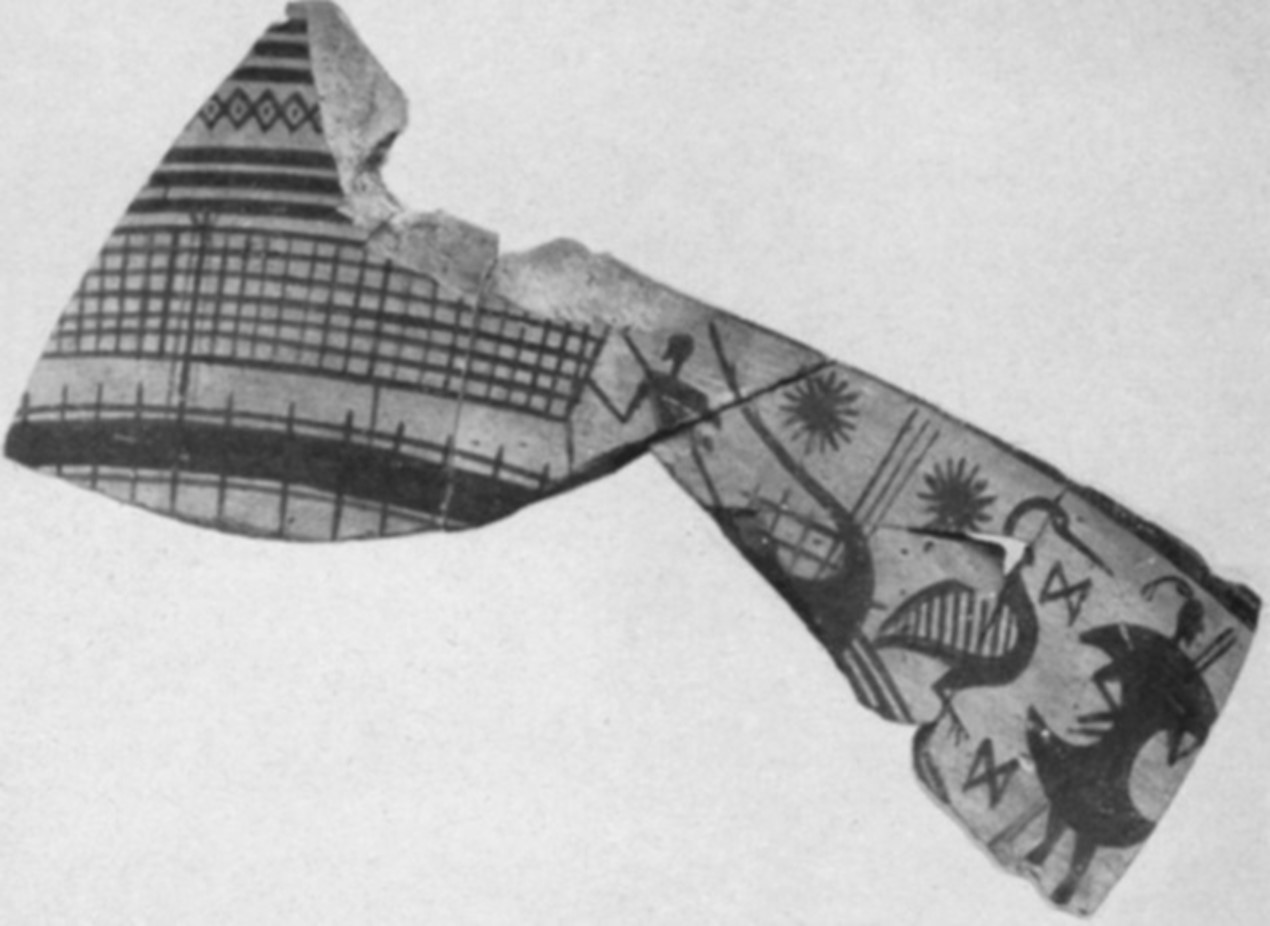Fragmentary double-levelled ship to the left in the conventional Dipylon style, with all the verticals and horizontals, but no tholepins. Only the mid-section and the stern are preserved. The aftercastle has a latticed railing made up of three vertical and two horizontal lines. There is a small plank protrusion from the sternpost slightly above the steering oar. The ship has a rectangular sail with a checkerboard pattern made up of numerous horizontal and vertical lines. There is a brace attached to the aftercastle, and two brailing ropes - one running from the corner of the sail and another from the centre of the after half of the sail to the deck. The mast is forked, with two vertical lines on either side which could be halyards for raising and lowering the mast, or alternatively more brails. There are eleven stanchions preserved in total. A figure facing left, probably the helmsman, holds the edge of the sail with his right hand. There are three spears stored in the aftercastle.
Double-levelled galley
A136
Late Geometric I
Dipylon, Athens
Attic pedestalled krater sherds
Athens National Museum
A: Basch 1978: no. 349; Kirk 1949: 102-103, no. 14, pl. 40.1; Morrison and Williams 1968: 22, Geom. 8(3), pl. 2d; Pernice 1892: fig. 2
Basch, L. 1978. “Le Navire mns et autre notes de voyage en Egypte,” MM 64: 99-123.
Kirk, G.S. 1949. “Ships on Geometric Vases.” BSA 44: 93-153, pls. 38-40.
Morrison, J.S. and R.T. Williams. 1968. Greek Oared Ships: 900-322 B.C. Cambridge: Cambridge University Press.
Pernice, E. 1892. “Über die Schiffsbilder auf den Dipylonvasen,” AM 17: 285-306.
